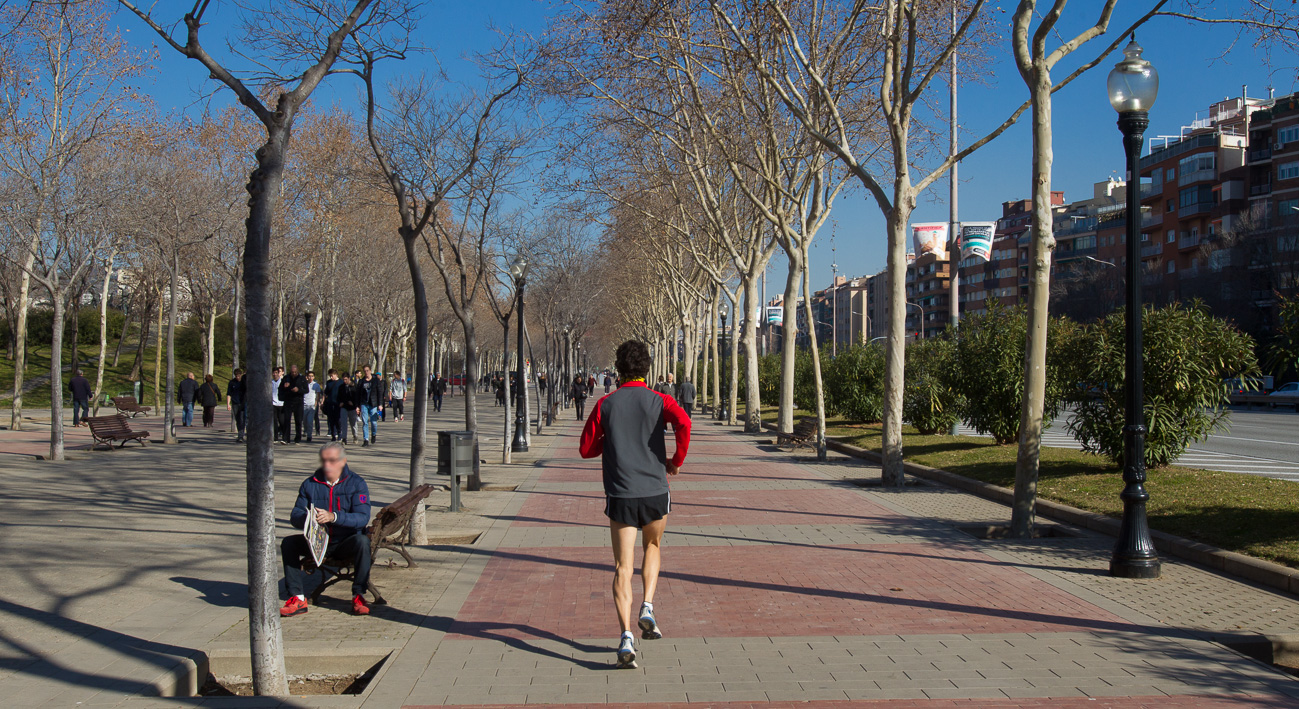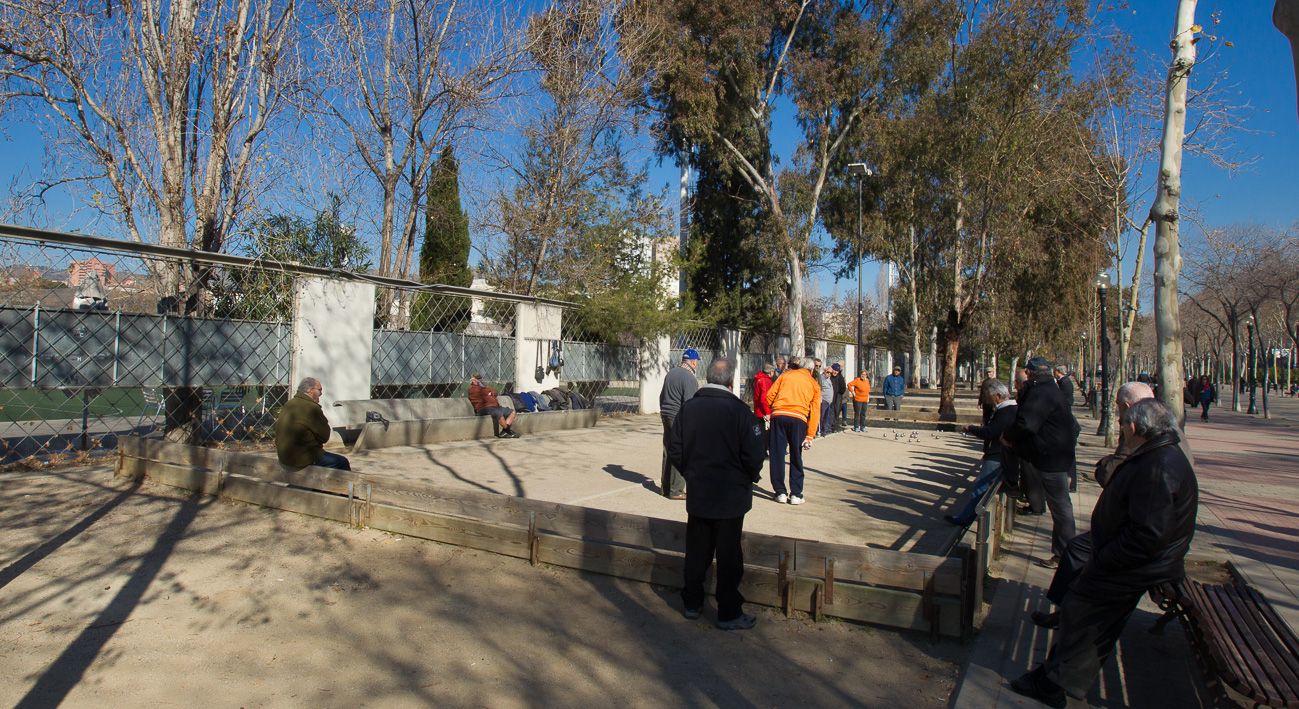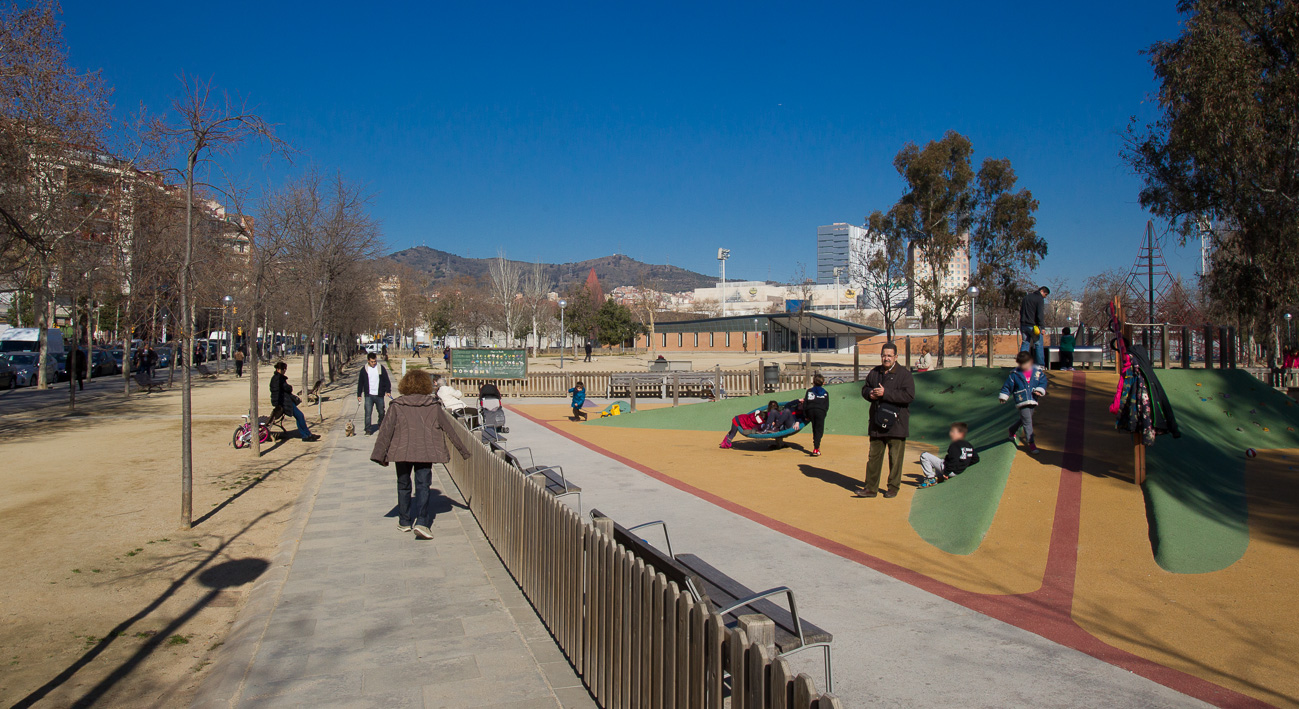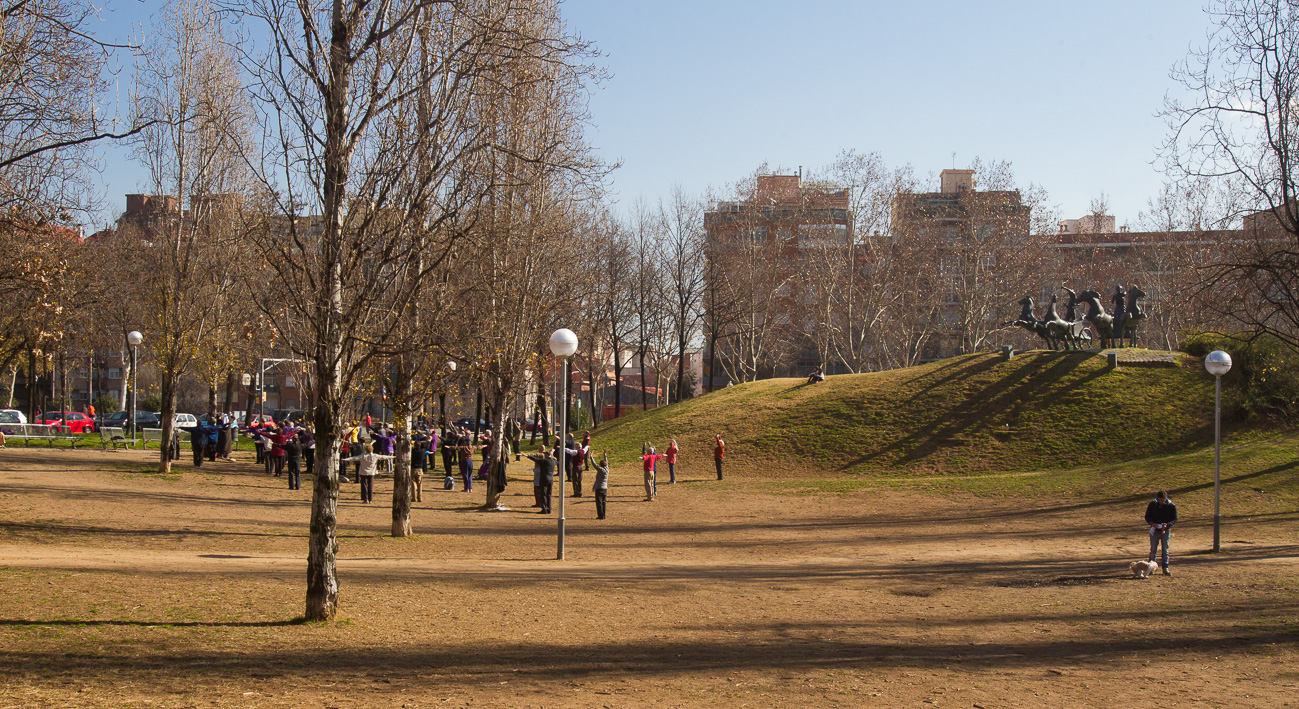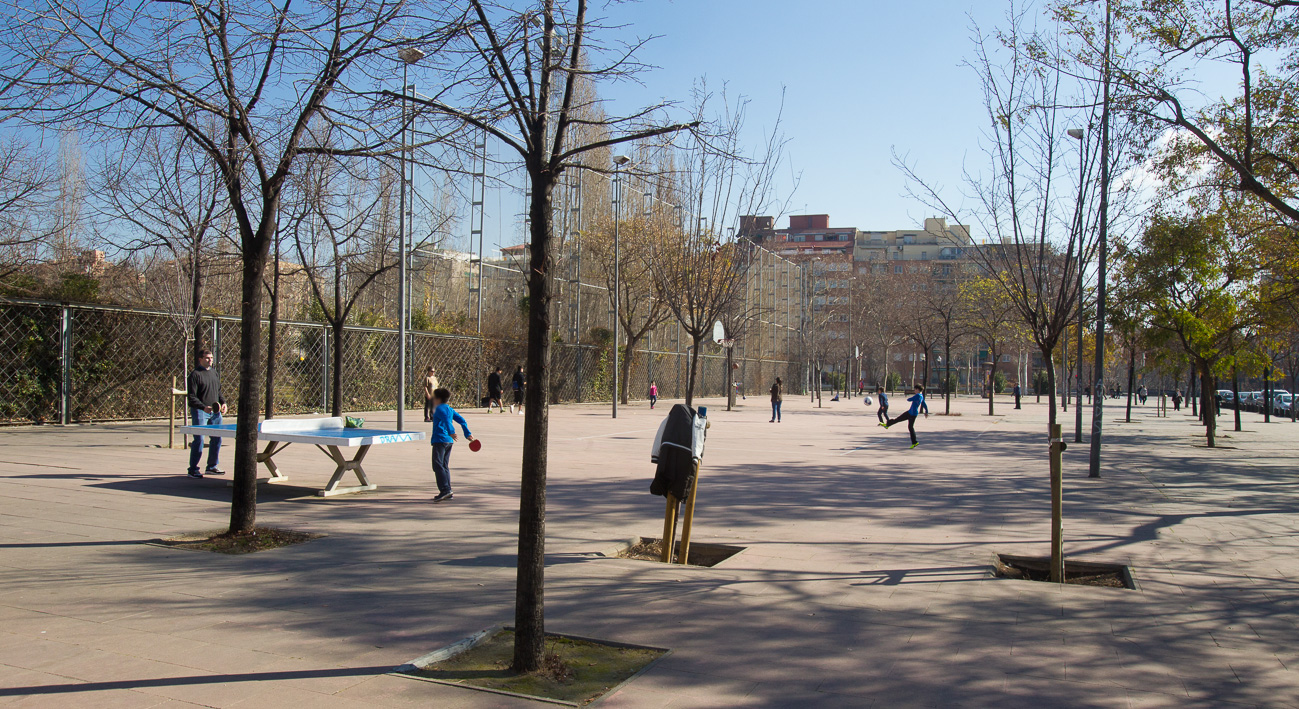The park was designed as a transition between the Meridiana’s noisy traffic and the silence of the Sant Andreu cemetery. It is made up of green islands, with tree-lined leisure areas and sports facilities. These include the biggest open-air swimming pool in Barcelona.

History
The name Can Dragó originates from the War of the Spanish Succession (1714), when a company of Bourbon troops, known as the dragoons, established themselves on the farm that dominated the area at the time.

Biodiversity
The line of trees making up part of the landscape along this boulevard includes lime trees (Tilia x euchlora), poplars (Populus nigra), black locusts (Robinia pseudoacacia), nettle trees (Celtis australis), planes (Platanus x hispanica) and eucalyptuses (Eucalyptus globulus).

Art and Architecture
In a central part of the park there is a small hill covered in grass with a replica of the Aurigues olímpics sculpture by Pau Gargallo, whose original is housed at the Olympic Stadium.

Landscaping and Design
The green space is made up of four separate blocks, each of which has a specific function. The first two blocks have sports facilities, with the second having an outdoor pool, known locally as El Llac (The Lake), which is the city’s biggest municipal swimming pool. The third and fourth blocks are big green spaces that provide a square, resting area, kids’ games area and football pitch.
-
- Phone number
- Tel.: 010
-
- Titularity
- Public center
- Address:
- C Rosselló i Porcel, 7
- Districte:
- Nou Barris
- Neighborhood:
- Porta
- City:
- Barcelona
Timetable
| Dies | Hores | ||
|---|---|---|---|
| Tots els dies | de 00:00 h a 24:00 h |
- Sections of this equipment
- Àrea de joc infantil
- Àrea de joc infantil
- Àrea d'esbarjo per a gossos
- Àrea de joc infantil


